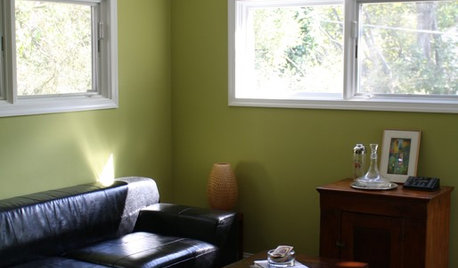I'm planning an NFT system and could use help.
flogrow
11 years ago
Related Stories

LIFE10 Things Around My Home That I’m Thankful For
A designer shares the comforts big and small that she is grateful for
Full Story
REMODELING GUIDESArchitects’ Tips to Help You Plan Perfect Storage
Before you remodel, read this expert advice to be sure you incorporate the storage you need
Full Story
ARCHITECTUREHouse-Hunting Help: If You Could Pick Your Home Style ...
Love an open layout? Steer clear of Victorians. Hate stairs? Sidle up to a ranch. Whatever home you're looking for, this guide can help
Full Story
DECORATING GUIDESGot a Problem? 5 Design Trends That Could Help
These popular looks can help you hide your TV, find a fresh tile style and more
Full Story
DECORATING GUIDESCould a Mission Statement Help Your House?
Identify your home’s purpose and style to make everything from choosing paint colors to buying a new home easier
Full Story
EXTERIORSHelp! What Color Should I Paint My House Exterior?
Real homeowners get real help in choosing paint palettes. Bonus: 3 tips for everyone on picking exterior colors
Full Story
WINTER GARDENING6 Reasons I’m Not Looking Forward to Spring
Not kicking up your heels anticipating rushes of spring color and garden catalogs? You’re not alone
Full Story
LIFEYou Said It: ‘I’m Never Leaving’ and More Houzz Quotables
Design advice, inspiration and observations that struck a chord this week
Full StoryMore Discussions









rebelhead
rebelhead
Related Professionals
Maple Valley Landscape Architects & Landscape Designers · North New Hyde Park Landscape Architects & Landscape Designers · Wareham Landscape Architects & Landscape Designers · Americus Landscape Contractors · Corona Landscape Contractors · Eagle Landscape Contractors · Hayward Landscape Contractors · Inglewood Landscape Contractors · Pomona Landscape Contractors · Pompton Lakes Landscape Contractors · Rio Linda Landscape Contractors · Soddy Daisy Landscape Contractors · Watertown Landscape Contractors · Weymouth Landscape Contractors · Crowley Landscape Contractorsrebelhead
rebelhead
rebelhead
flogrowOriginal Author
cole_robbie
rebelhead
grizzman
flogrowOriginal Author
grizzman
rebelhead
grizzman
cole_robbie
grizzman
cole_robbie
grizzman
cliver mcguiver
grizzman
flogrowOriginal Author
cliver mcguiver
cliver mcguiver
cliver mcguiver
cliver mcguiver
cliver mcguiver
grizzman
cliver mcguiver
grizzman
sdgrower
cliver mcguiver
cliver mcguiver